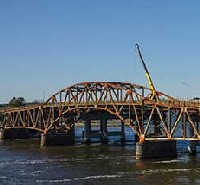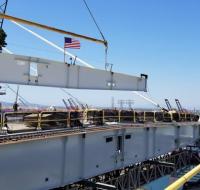The four-year study will get under way this autumn and will explore options for where to build the new crossing and how to fund it.
"Marylanders all across the state depend on being able to cross the Chesapeake Bay, but the reality is that there is simply too much traffic, and that it will continue to get worse,” said governor Larry Hogan. He added that the new study is the critical first step needed in order to move forward on addressing the long-range issue of future traffic congestion on the Chesapeake Bay Bridge.
Tier 1 National Environmental Policy Act study will include traffic, engineering and environmental analyses; cost-per-mile estimates; preliminary financing and procurement options; and an economic and land-use study.
Maryland Department of Transportation secretary Pete Rahn said that the Bay Bridge can be maintained safely through to 2065 with preservation and maintenance work; however, studies show that by 2040, motorists could experience up to 22.5km delays. “This is the first step in a long process to address the demand for additional capacity across the Chesapeake Bay,” he said.
The study will be carried out by Maryland Transport Authority (MDTA), the agency that finances, owns, operates, and maintains the state’s eight toll facilities.




